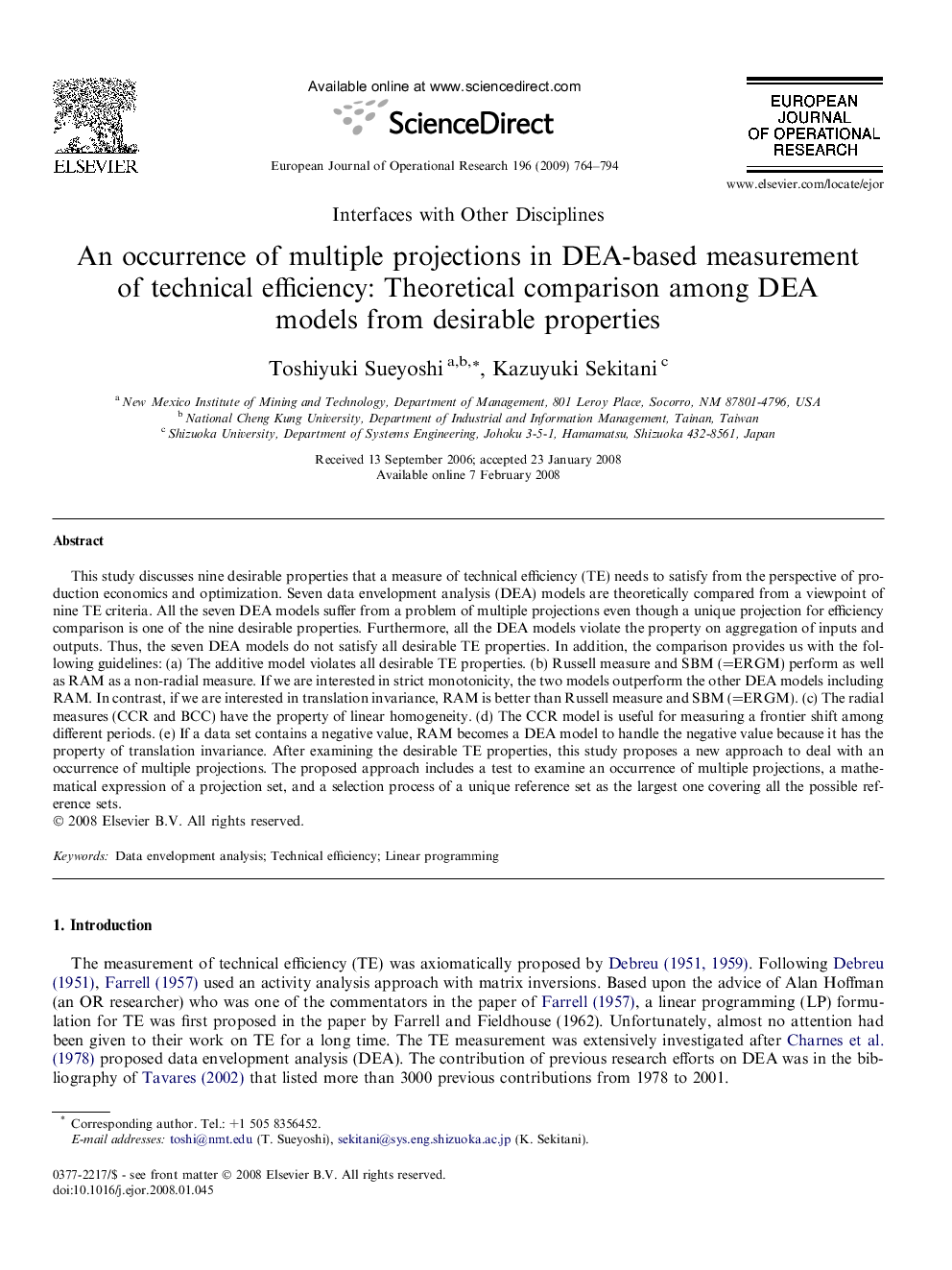| Article ID | Journal | Published Year | Pages | File Type |
|---|---|---|---|---|
| 480929 | European Journal of Operational Research | 2009 | 31 Pages |
This study discusses nine desirable properties that a measure of technical efficiency (TE) needs to satisfy from the perspective of production economics and optimization. Seven data envelopment analysis (DEA) models are theoretically compared from a viewpoint of nine TE criteria. All the seven DEA models suffer from a problem of multiple projections even though a unique projection for efficiency comparison is one of the nine desirable properties. Furthermore, all the DEA models violate the property on aggregation of inputs and outputs. Thus, the seven DEA models do not satisfy all desirable TE properties. In addition, the comparison provides us with the following guidelines: (a) The additive model violates all desirable TE properties. (b) Russell measure and SBM (=ERGM) perform as well as RAM as a non-radial measure. If we are interested in strict monotonicity, the two models outperform the other DEA models including RAM. In contrast, if we are interested in translation invariance, RAM is better than Russell measure and SBM (=ERGM). (c) The radial measures (CCR and BCC) have the property of linear homogeneity. (d) The CCR model is useful for measuring a frontier shift among different periods. (e) If a data set contains a negative value, RAM becomes a DEA model to handle the negative value because it has the property of translation invariance. After examining the desirable TE properties, this study proposes a new approach to deal with an occurrence of multiple projections. The proposed approach includes a test to examine an occurrence of multiple projections, a mathematical expression of a projection set, and a selection process of a unique reference set as the largest one covering all the possible reference sets.
